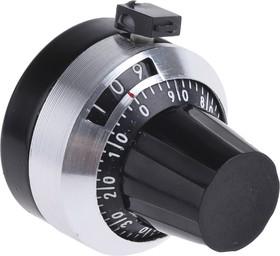Counting Dials and Turns-Counting Dials: A Comprehensive Guide

Counting dials and turns-counting dials play a crucial role in the world of precision instruments. These devices are essential in applications where accurate measurement and control of rotations are necessary. Whether you're an engineer, technician, or hobbyist, understanding these instruments can significantly enhance your ability to achieve precise adjustments and measurements. This article delves into the intricacies of counting and turns-counting dials, exploring their functionality, applications, and benefits.
What are Counting Dials?
Counting dials, or mechanical counters, are devices used to count the number of rotations or events. These instruments feature a dial or series of dials that move incrementally with each rotation or action, visually representing the count. Counting dials are commonly found in various industrial and scientific applications, such as machinery, laboratory equipment, and measurement devices.
Functionality of Counting Dials
The primary function of counting dials is accurately tracking and accurately displaying the number of rotations or cycles. These dials are typically calibrated to move a set distance per rotation, ensuring precision in the counting process. The mechanism inside the dial ensures that each full rotation is counted correctly, making it a reliable tool for monitoring repetitive actions.
Counting dials come in various configurations, from simple single-dial setups to complex multi-dial systems. The choice of configuration depends on the application's specific requirements, including the range of counts needed and the level of precision required.
What are Turns-Counting Dials?
Turns-counting dials are specialized types of counting dials designed to provide detailed information about the number of complete and fractional rotations. They are particularly useful in applications where fine adjustments are necessary, such as tuning and calibration tasks.
Functionality of Turns-Counting Dials
Turns-counting dials combine a primary counting dial and one or more secondary dials. The primary dial typically counts the number of complete turns, while the secondary dials provide finer resolution by counting fractions of a turn. This dual functionality allows users to make precise adjustments and track coarse and fine movements.
In many cases, turns-counting dials are equipped with vernier scales, which offer even greater precision by allowing users to read fractions of the smallest division on the dial. This added level of detail is invaluable in applications where minute adjustments can significantly impact a system's overall performance.
Applications of Counting Dials and Turns-Counting Dials
Counting dials and turns-counting dials are used across various industries and applications. Some common uses include:
- Laboratory Equipment: In scientific research, counting dials measures and controls variables such as flow rates, volumes, and rotations in experiments and tests.
- Machinery and Manufacturing: These dials are integral to machinery that requires precise rotational measurements, such as CNC machines, lathes, and milling machines.
- Calibration and Tuning: Turns-counting dials are essential in calibrating instruments and devices, allowing for fine-tuned adjustments to achieve optimal performance.
- Aerospace and Defense: In aerospace and defense applications, these dials ensure the precise control of mechanical components and systems, contributing to overall safety and reliability.
- Hobbyist and DIY Projects: Enthusiasts and hobbyists use counting dials in projects that require accurate rotation tracking, such as robotics, model building, and custom machinery.
Benefits of Using Counting Dials and Turns-Counting Dials
The use of counting dials and turns-counting dials offers several advantages, including:
- Precision: These dials provide highly accurate measurements and control, essential for applications where even slight deviations can lead to significant issues.
- Ease of Use: Counting dials are straightforward, with clear visual indicators that make it easy to track rotations and adjustments.
- Versatility: In various configurations, counting dials can be tailored to meet the specific needs of different applications, from simple counting tasks to complex tuning operations.
- Reliability: Built with robust materials and mechanisms, these dials are designed to withstand harsh conditions and continuous use, ensuring long-term reliability.
- Cost-Effective: Counting dials offer a cost-effective solution without compromising accuracy and performance compared to electronic counters and measurement devices.
Conclusion
Counting and turns-counting dials are indispensable tools in numerous fields, providing the precision and control necessary for various applications. From industrial machinery to scientific research, these dials ensure accurate tracking and adjustments, contributing to the success of multiple projects and operations. Brands like ETI Systems and Digikey offer a diverse selection of counting dials and turns-counting dials, ensuring you can find the perfect solution for your needs. Investing in high-quality counting dials can significantly enhance your ability to achieve precise measurements and control, making them valuable to any toolkit.
- Art
- Causes
- Best Offers
- Crafts
- Dance
- Drinks
- Film
- Fitness
- Food
- Игры
- Festival
- Gardening
- Health
- Главная
- Literature
- Music
- Networking
- Другое
- Party
- Religion
- Shopping
- Sports
- Theater
- Wellness



